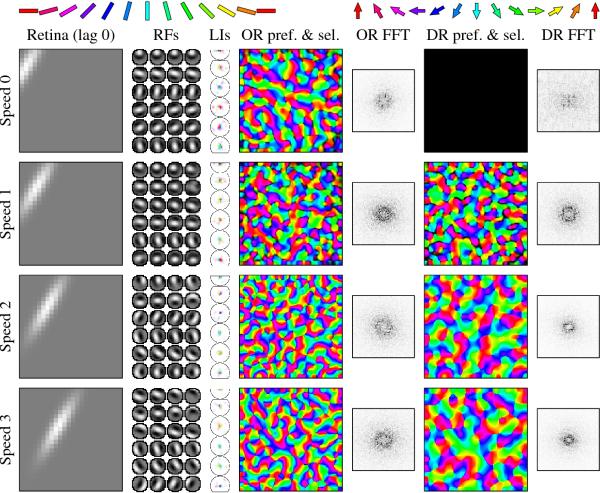
Click on the image to see a PDF version (for zooming in)
Fig. 5.25. Effect of input speed on direction maps. From left
to right, each row shows a sample retinal activation at lag 0, final
receptive fields to LGN regions with lags 3, 2, 1, and 0 (left to
right) of six sample neurons, the inhibitory lateral connections of
those six neurons, the orientation preference and selectivity map, the
Fourier transform of the OR preferences, the direction preference and
selectivity map, and the Fourier transform of the DR
preferences. Orientation and direction histograms are not shown
because they are all nearly flat. Each row shows the result from using
training inputs moving at a different speed, ranging from zero
(stationary) to moving three retinal units between each group of
lagged LGN cells. For the example input shown, the lag 3 input was
always the one shown in the top row (labeled "Speed 0"), and by lag 0
it had moved to the position shown in each row. When the inputs were
stationary (i.e. all lags had the same input patterns), no direction
map or directionselective units developed, and the "DR pref. & sel."
map is entirely dark. As the speed increases, more units become
direction selective, and direction becomes the largest-scale
organization in the map. This increase in feature size is visible in
the DR Fourier transform plots, where a smaller spatial frequency
(larger feature spacing) leads to smaller rings as speed is
increased. These results are predictions for maps in animals with
different retinal motion sensitivities or those raised in environments
with different speeds of visual motion.
|